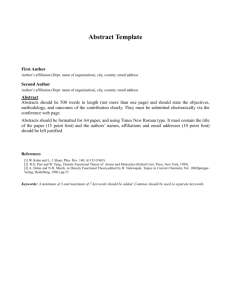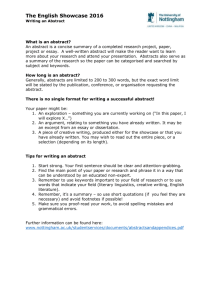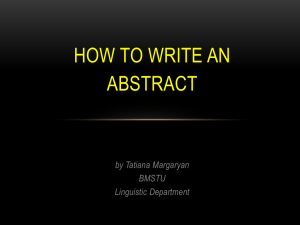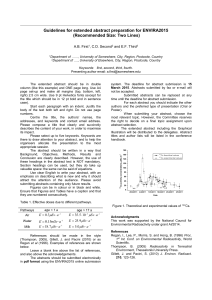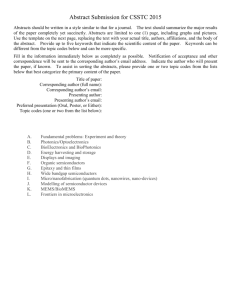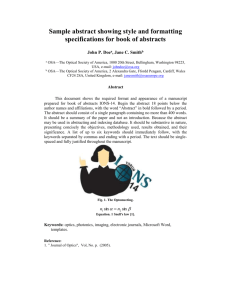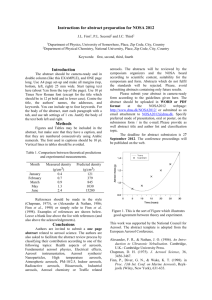Abstract template WORD
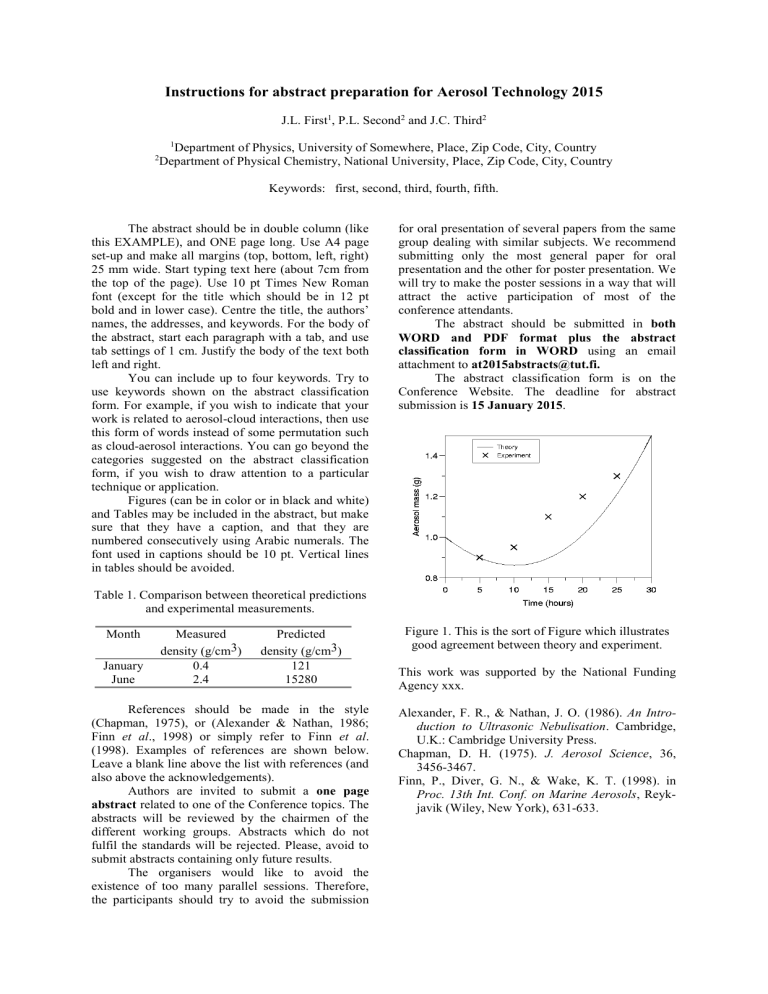
Instructions for abstract preparation for Aerosol Technology 2015
J.L. First 1 , P.L. Second 2 and J.C. Third 2
1 Department of Physics, University of Somewhere, Place, Zip Code, City, Country
2 Department of Physical Chemistry, National University, Place, Zip Code, City, Country
Keywords: first, second, third, fourth, fifth.
The abstract should be in double column (like this EXAMPLE), and ONE page long. Use A4 page set-up and make all margins (top, bottom, left, right)
25 mm wide. Start typing text here (about 7cm from for oral presentation of several papers from the same group dealing with similar subjects. We recommend submitting only the most general paper for oral presentation and the other for poster presentation. We the top of the page). Use 10 pt Times New Roman font (except for the title which should be in 12 pt bold and in lower case). Centre the title, the authors’ names, the addresses, and keywords. For the body of the abstract, start each paragraph with a tab, and use tab settings of 1 cm. Justify the body of the text both left and right.
You can include up to four keywords. Try to will try to make the poster sessions in a way that will attract the active participation of most of the conference attendants.
The abstract should be submitted in attachment to at2015abstracts@tut.fi.
both
WORD and PDF format plus the abstract classification form in WORD using an email
The abstract classification form is on the
Conference Website. The deadline for abstract submission is 15 January 2015 . use keywords shown on the abstract classification form. For example, if you wish to indicate that your work is related to aerosol-cloud interactions, then use this form of words instead of some permutation such as cloud-aerosol interactions. You can go beyond the categories suggested on the abstract classification form, if you wish to draw attention to a particular technique or application.
Figures (can be in color or in black and white) and Tables may be included in the abstract, but make sure that they have a caption, and that they are numbered consecutively using Arabic numerals. The font used in captions should be 10 pt. Vertical lines in tables should be avoided.
Table 1. Comparison between theoretical predictions and experimental measurements.
Month Measured Predicted
Figure 1. This is the sort of Figure which illustrates
January
June density (g/cm3)
0.4
2.4 density (g/cm3)
121
15280
References should be made in the style
(Chapman, 1975), or (Alexander & Nathan, 1986;
Finn et al ., 1998) or simply refer to Finn et al .
(1998). Examples of references are shown below.
Leave a blank line above the list with references (and also above the acknowledgements).
Authors are invited to submit a one page abstract related to one of the Conference topics. The abstracts will be reviewed by the chairmen of the different working groups. Abstracts which do not fulfil the standards will be rejected. Please, avoid to submit abstracts containing only future results.
The organisers would like to avoid the existence of too many parallel sessions. Therefore, the participants should try to avoid the submission good agreement between theory and experiment.
This work was supported by the National Funding
Agency xxx.
Alexander, F. R., & Nathan, J. O. (1986). An Introduction to Ultrasonic Nebulisation . Cambridge,
U.K.: Cambridge University Press.
Chapman, D. H. (1975). J. Aerosol Science , 36,
3456-3467.
Finn, P., Diver, G. N., & Wake, K. T. (1998). in
Proc. 13th Int. Conf. on Marine Aerosols , Reykjavik (Wiley, New York), 631-633.
